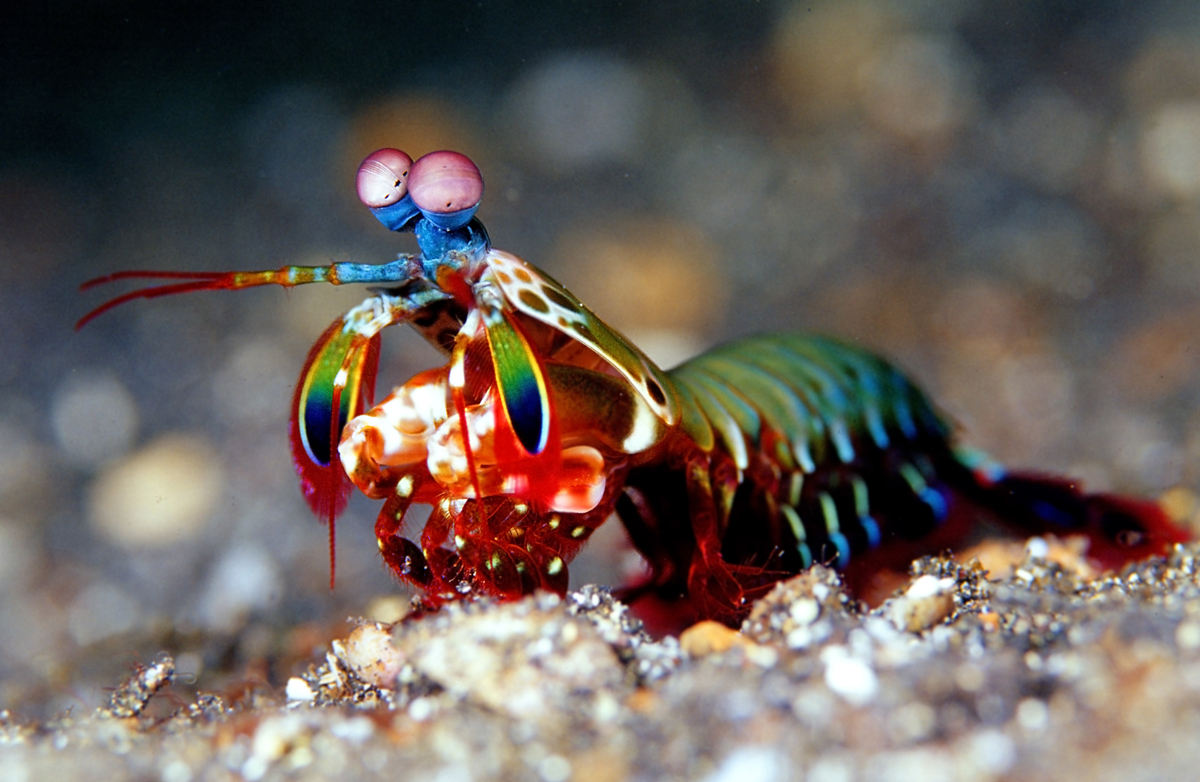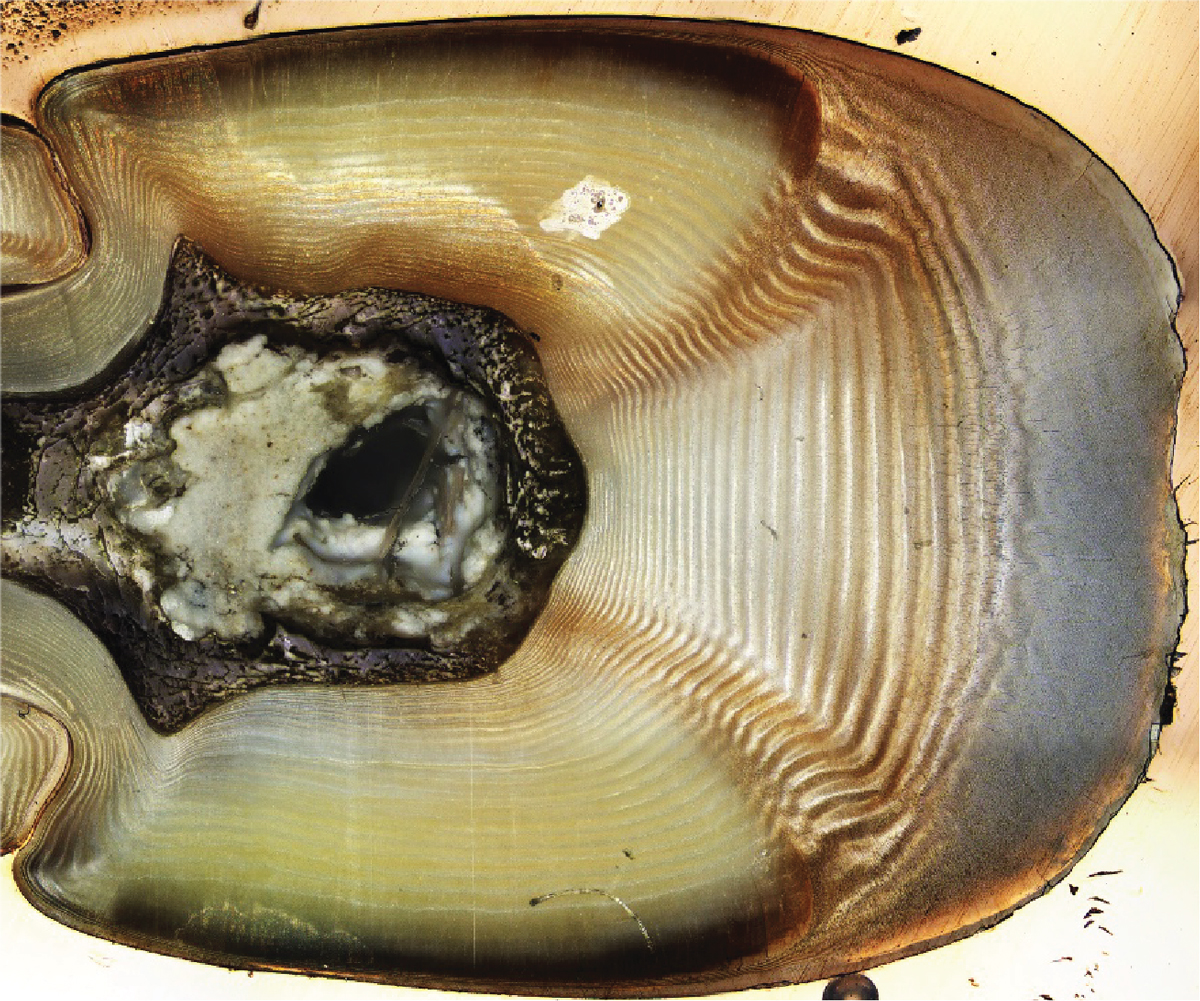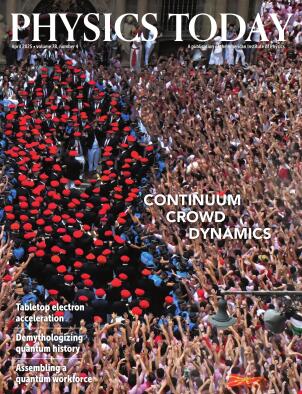The protection required to deliver a powerful underwater punch
DOI: 10.1063/pt.uasp.rpyn

The peacock mantis shrimp—a variety of smasher mantis shrimp—uses its two dactyl clubs, the red bulbous appendages shown folded backward above the legs, to shatter various seashells, including those housing hermit crabs. The clubs’ internal structure protects them from damage. (Photo by iStock.com/mantaphoto.)

The smasher mantis shrimp is small, but it packs a large punch. It has evolved to use its specialized front appendages—the dactyl clubs, the two red bulbous structures in the photo above—to shatter seashells with peak forces of around 1500 N delivered in less than 50 µs. That is the strongest self-powered strike by any known animal on Earth. Although other animals have similar attack mechanisms, they typically sustain damage, and they can attack only once per molting cycle. The mantis shrimp’s attacks are not similarly limited. Now Horacio Espinosa of Northwestern University and colleagues have provided the first experimental evidence that the clubs’ internal structure is what prevents substantial damage.
When a dactyl club strikes a shell, two impacts occur: one from direct contact and another from the collapse of cavitation bubbles formed in the surrounding water when the club retracts. Espinosa had learned from previous experience in studying underwater explosions that shock waves could be dangerous underwater, even if they don’t generate as much force as a contact blow. The collapse of the bubbles generates both pressure waves and shear waves, with the latter being particularly harmful to biological tissue.
Previous theories suggested that phononic bandgaps—structural mechanisms for filtering stress waves within specific frequency ranges—help reduce damage to the clubs. Espinosa and his team used acoustic-wave analysis to examine how shock waves are filtered in a club. They discovered that the high-frequency waves generated by the bubble collapse match the frequencies that a dactyl club’s internal structure is able to filter.
Each dactyl club has a hierarchical design with multiple regions. The impact surface behaves like a ceramic: hard but resistant to fracture. Beneath that outer layer, the club contains two regions of fine chitin fibers, with the innermost region arranged in a helicoidal pattern, known as a Bouligand structure. In typical shattered glass, cracks form radially outward. In a helicoidal fiber architecture, however, cracks follow complex curved paths, which makes the material resistant to crack propagation.

A bisected view of a peacock mantis shrimp’s dactyl club. Periodic layers of chitin fibers give it a striped appearance. The structure filters shear waves and reduces damage to the shrimp, so it can attack multiple times. (Image adapted from N. A. Alderete et al., Science 387, 659, 2025

The periodicity of the Bouligand structure is also crucial to filtering propagating shear waves. The chitin fibers are stacked at varying angles, with the periodicity of the stacks decreasing closer to the club’s core. That gradient enhances wave filtering across a broader frequency range, thereby reducing the energy transmitted to the shrimp’s soft tissue.
Espinosa and colleagues used lasers to excite and measure waves propagating within a bisected dactyl club of the peacock mantis shrimp (a variety of smasher mantis shrimp) to confirm the filtering effect. Their experiments and analysis of the resulting phononic spectra showed that the club was selectively filtering harmful frequencies. Although the structure operates similarly to a phononic crystal, replicating it synthetically would require advanced nanomanufacturing techniques. (N. A. Alderete et al., Science 387, 659, 2025
This article was originally published online on 4 March 2025.
